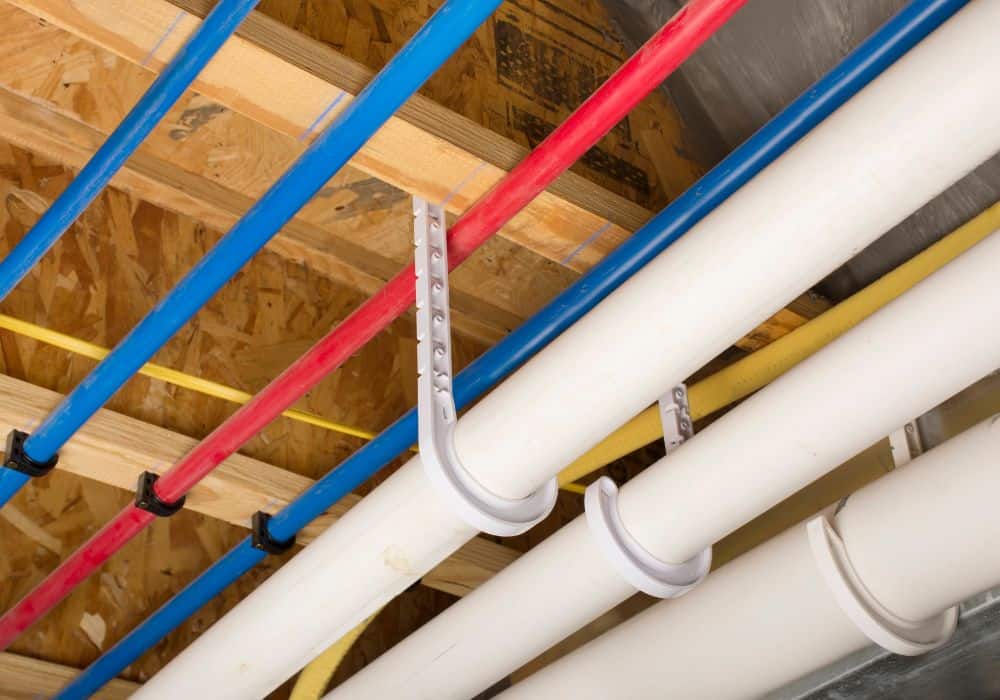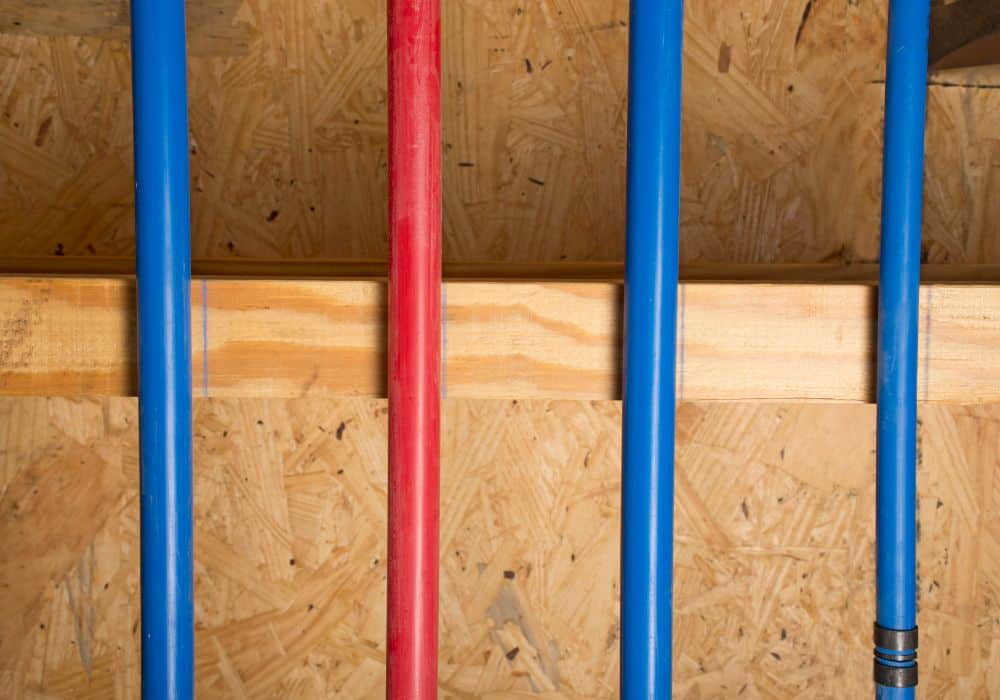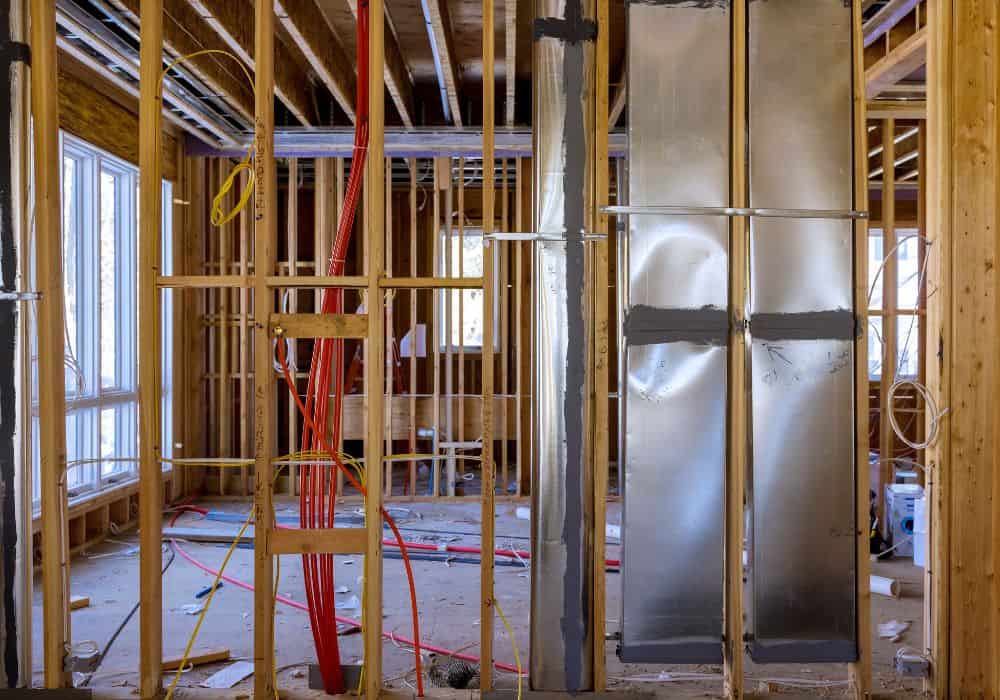Are you living in a cold region and need your pipe to be installed? Then, you might be torn in choosing the best pipe for cold weather, especially with the variety of pipe materials available in the market. But don’t fret because we’ll give the most suitable recommendation.
In this guide, we will focus on the highly appropriate water pipe in areas with freezing temperatures. Accordingly, this will give your valuable insights about this particular pipe material and help you assess if this fits your preferences.
Why choosing the best pipe for cold weather is critical?
Water damage is such a devastating problem that no homeowner would want to put themselves into. Unfortunately, this still can happen if you’ve got leaks or cracks in your plumbing system due to pipes bursting.
Every year, thousands of homes are affected by frozen pipes that get damaged due to freezing conditions caused by natural phenomena or even climate change. In cases where water freezes and causes the pipes to burst, there could be more unfortunate consequences like floods and even fire.
Therefore, it’s pivotal to assess the right pipe material for your home. And based on many studies, there’s a specific type of pipe designed for this issue. And this is none other than PEX, or Cross-linked Polyethylene.
Continue reading and learn more about this rather ingenious creation that is very valuable during cold weather.

What is PEX?
PEX is a plastic-based pipe material manufactured from polyethylene, a part of the polyolefin resins group. This thermoplastic element uses either medium or high-density polyethylene to generate an upgraded material that can withstand cold air.
More so, this specific pipe type comes with an improved chemical structure to suit the demands of water supply lines and plumbing systems with high pressure. Although this kind of pipe material is way better than PVC or CPV pipe, you need to know that PEX is a freeze-resistant pipe and not a freezeproof.
This should be thoroughly understood beforehand because many think that PEX is freeze-proof. More so, you need to comprehend that there’s a vast difference between a material that bears cold weather effectively and a material that is designed for extreme conditions.
Unfortunately, there have been no creations yet of the latter. But still, the former, which we refer to as PEX, is still the best pipe material to date for freezing temperatures.
Why PEX is highly suggested by professionals?
Below, we’ve listed all the key features of PEX that make it a standout in terms of enduring chilly winters. These include its core properties, longevity, uses, and costs, among others.
1. Performs better in cold conditions
One of the most fascinating characteristics of PEX is the fact that it alters its surface depending on the weather. For instance, during freezing conditions, there’s a higher tendency for the water flowing through the pipe to get frozen.
With the flexible properties of PEX, it can easily expand to accommodate the alterations of the elements inside the pipe. Then, as soon as the temperature gets back to normal and the waters thaw, the PEX pipe contract back to its original proportions.
This unique quality makes PEX more suitable in regions with colder temperatures. And if we compare PEX with other metal-based materials like cast iron or copper piping, it surely sticks out a mile. Well, aside from its flexibility, metals lose heat easily.
On the other hand, a PVC and CPVC pipe may not work well in freezing conditions because of their physical characteristics. Made from polyvinyl chloride, plastic pipelines tend to be very brittle during low temperatures. This means that this type of tube is prone to breakage when the temperature goes down.
But as mentioned earlier, PEX pipes are not freezeproof. So, although a freezing climate does not impact the durability of these pipes, they may not be able to endure extreme conditions.

2. Lasts for a long period of time
When it comes to long-term strength in colder areas, PEX is on top of the list because of its remarkable properties. These upgraded plastic pipes are designed to be more flexible even during abrupt temperature dips. As a result, its lifespan is way longer compared to copper and other pipe materials.
PEX is also resistant to corrosion and rust. More so, it is not impacted by electrolysis, which primarily causes leaks in copper tubes. But of course, if we do not factor in the cold temperature and focus on other areas like sturdiness and noise reduction, then copper may stand a chance.
3. Withstands chlorine
Did you know that some PEX pipes have the same characteristics as CPVC? There is a PEX pipeline that provides a significant resistance level to chlorine, making them a great option for water supplies or even drinking water lines.
Not only that but there are brands that are also UV resistant. However, if you are unsure, it’s more apt not to install these pipes under the direct heat of sunlight to avoid damage to the top plastic layer. You may use them instead for insulation in the attics or perhaps a plumbing system in the basements.
4. Works well with both hot and cold water distribution
In relation to the above aspect, PEX is such a remarkable choice in terms of water distribution, either hot or cold. The inner pipes are highly resistant to temperature as well as high pressure. Because of this, it can conveniently handle varying temperatures.
Furthermore, these are very safe and effective in terms of water circulation for hoses and drains. Additionally, PEX pipes are highly recommended to supply running water for faucets as well as transport water from the sink.
Given its impressive features, no wonder why PEX is favored by most residential and commercial constructions. Many plumbers opt for this material to ensure a clean water supply with no interruptions.

5. Re-pipes according to their use
Since PEX is way more flexible compared to metal pipes, this gives you more room to adjust or make new constructions. The plastic tubes can easily crawl spaces and snake through current pipes. As a result, this creates an easy installation of pipelines. It also makes re-piping and retrofitting more convenient.
6. Offers a very easy installation
Another positive aspect of PEX is the fact that you can install the pipes on your own. The push-to-connect system effectively works with PEX, allowing you to do the tasks personally at your own convenience.
Moreover, compared to copper pipes, PEX is way lighter. So, you can connect and bend them easily without the need of hiring a plumber. Thus, you won’t have to spend money on labor costs.
7. Highlights minimal maintenance
In general, PEX is cheaper than copper pipes but pricier than other plastic pipelines. Therefore, its cost may be considered to be in the middle, which is definitely a practical choice. Although these pipes could be more expensive than PVC or CPVC, you won’t be shelling out extra money for maintenance and repair.
More so, you can actually save more, especially if you are living in colder regions as these would last for a long time. This means there would be lesser chances of repairing or replacing the pipes due to leaks. Plus, the cost of PEX mainly does not fluctuate.
There would also be lesser expenses when you opt for this pipe because of its flexibility. Since you can smoothly bend the pipe, then you would be spending less money on elbows and other materials to connect the threads or a section of the pipes.
8. Ensures your safety above all

Lastly, PEX gives emphasis being leak-free. Unlike copper and other metal pipes, there would be lesser concerns about risky elements inside the pipe. Henceforth, these are suggested for a cleaner water supply.
Other remarkable features of PEX that highlight safety include resistance to pitting and leaching. There would be no mineral buildup as well because of the chemical composition of the pipe material.
Aside from that, PEX does not require soldering but rather mechanical fittings to link the tube. Therefore, this diminishes the possibility of fire or any hazardous issues during installation.
Can I use PEX for all my piping needs?
While we have suggested that PEX is the most suitable option for colder regions, do take note that this isn’t always the case for every situation. Therefore, you have to assess the application of the pipes as well as other important sections like the environment, cost, and longevity.
Remember that there are certain pipes for a particular area. And if you’re indeterminate about the options at hand, don’t hesitate to get help from professionals. They can provide you with expert insights on the best material according to what you really need.
Conclusion
Water damage can be very upsetting as this affects your household. More so, the devastation caused by leaking pipes can cost you a lot of money. That is why selecting the appropriate piping material is crucial to avoid these unfortunate happenings.
And based on various factors such as physical stability and resistance to certain elements during cold temperatures, it has been acknowledged by many that PEX is no doubt the best pipe material if you’re living in regions with freezing climates.
